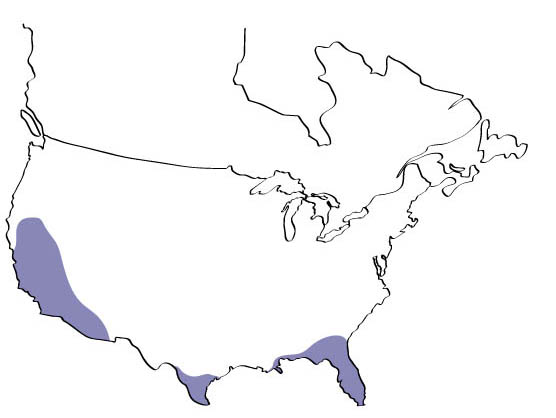76.
Orange
(Citrus sinensis)
Orange blossoms and other Citrus blooms were formerly important for honey production, especially in Florida. The increase of pesticide use on citrus farms and the popularity of seedless orange varieties (which don’t require bee pollination) have led to a decline in orange blossom honey. In some regions orange growers have actively worked to discourage nearby beekeeping, since pollen contamination by bees can cause seeds to develop in seedless oranges. When orange blossom honey was common, however, single colonies could produce more than 100 pounds of surplus honey in a good season. This honey is still much sought after: thick, white, and with a wonderful floral aroma. The average sugar concentration in the nectar of some orange species has been reported at 25%.
Recommended Species or Varieties
In addition to Citrus sinensis (and the many varieties of orange), kumquats (C. japonica) and other related fruits produce an abundance of bee-attracting flowers. One such related species valued for its fruit and slightly greater cold tolerance is the Satsuma orange (C. unshiu).
Notable Flower Visitors
Attracts honey bees; caterpillar host plant for sickle-winged skipper (Eantis tamenund), Thoas swallowtail (Papilio thoas), eastern giant swallowtail (P. cresphontes), and broad-banded swallowtail (P. astyalus) butterflies.
Uses
- Hedgerow
- Pollinator nesting material or caterpillar host plant
- Ornamental
- Edible/herbal/medicinal
Exposure: Sun
Soil moisture: Well draining
Bloom time: Early spring, early winter
Flower color: White
Maximum height: 50 feet (15 m)
77.
Plum, Cherry, Almond, Peach
(Prunus spp.)
The Prunus genus includes dozens of native and introduced spring-blooming trees and shrubs. Nearly all are high-value pollinator plants, supporting early-season bee species such as mining bees and mason bees. Many of these plants, especially the smaller shrubby wild plum species, respond well to coppice cutting. This technique involves periodically cutting the main trunk back to the ground to encourage suckering and a resulting denser, shorter shrublike form useful for hedgerows. The average sugar concentration in the nectar of some plum and cherry species reportedly ranges from 15 to 40%.
Recommended species
In addition to cultivated species, numerous wild ones such as black cherry (Prunus serotina) are found across North America. In California, drought-adapted hollyleaf cherry (P. ilicifolia) is a favorite Xerces hedgerow species. Chokecherry (P. virginiana), native to much of North America, has incredible tolerance for extreme cold, harsh winds, and other tough conditions: on the northern plains it is commonly planted in shelterbelts. Note that the leaves, branches, and seeds of these and many other Prunus
Notable Flower Visitors
Attracts early-season bee species; the mining bee Andrena fenningeri specializes in pollen collection from both Prunus and Salix (willow) species. Host plant for the caterpillars of many butterflies, including eastern tiger swallowtail (Papilio glaucus), western tiger swallowtail (P. rutulus), pale swallowtail (P. eurymedon), coral hairstreak (Satyrium titus), California hairstreak (S. californica), striped hairstreak (S. liparops), Lorquin’s admiral (Limenitis lorquini), white admiral (L. arthemis), Weidemeyer’s admiral (L. weidemeyerii) and spring azure (Celastrina ladon).
Caterpillars of numerous large, spectacular moths also feed on these plants, including black-waved flannel (Lagoa crispata), Nevada buckmoth (Hemileuca nevadensis), cecropia (Hyalophora cecropia), Cynthia (Samia cynthia), elm sphinx (Ceratomia amyntor), blinded sphinx (Paonias excaecata), elegant sphinx (Sphinx perelegans), small-eyed sphinx (Paonias myops), two-spotted sphinx (Smerinthus jamaicensis), Glover’s silk (Hyalophora columbia), hummingbird clearwing (Hemaris thysbe), imperial (Eacles imperialis), Io (Automeris io), Polyphemus (Antheraea polyphemus), and Promethean (Callosamia promethea).
Uses
- Hedgerow
- Reforestation/shade garden
- Pollinator nesting material or caterpillar host plant
- Ornamental
- Edible/herbal/medicinal
Exposure: Sun to part shade
Soil moisture: Average
Bloom time: Spring
Flower color: Pink, white
Maximum height: 80 feet (24 m)











